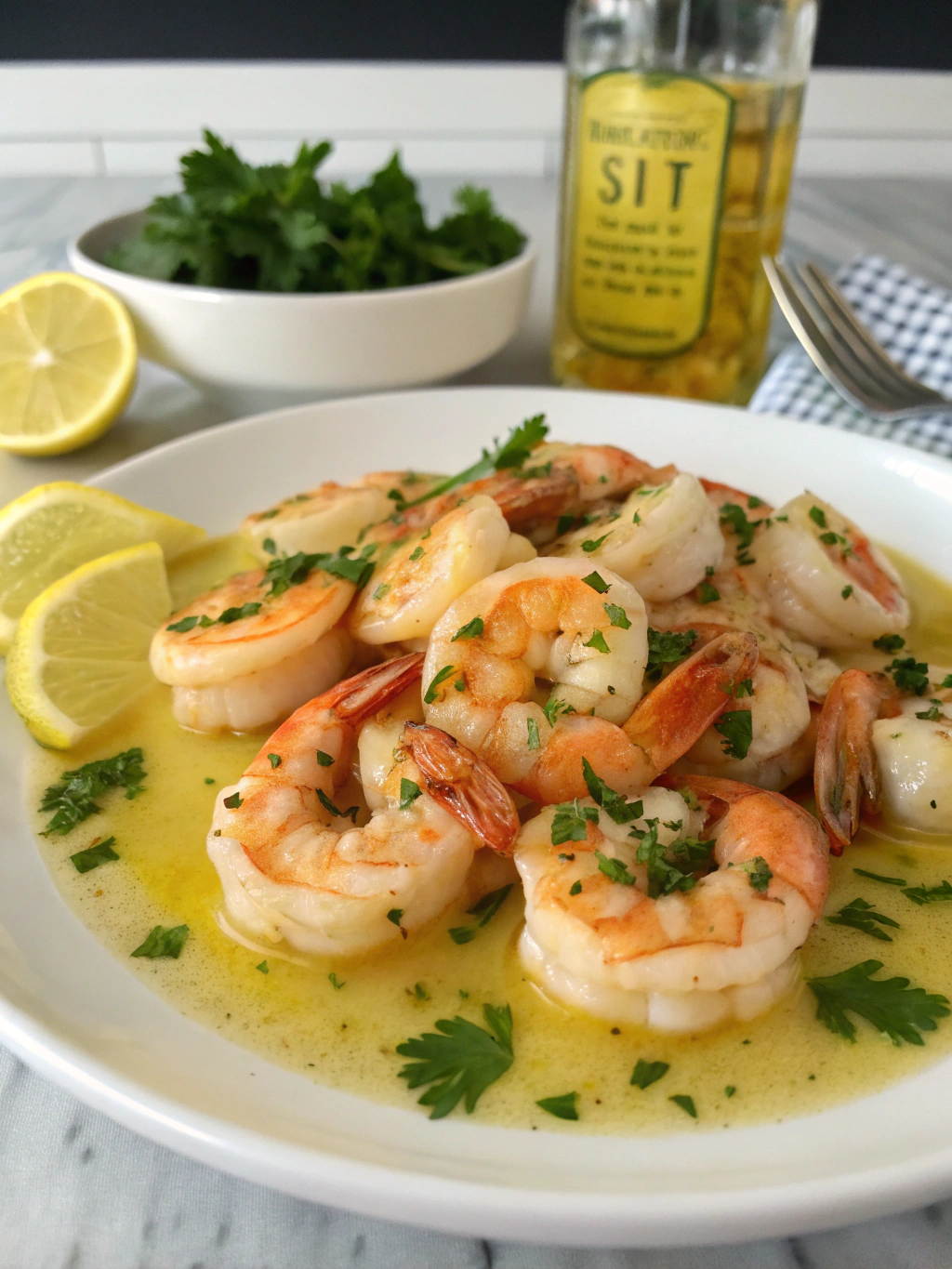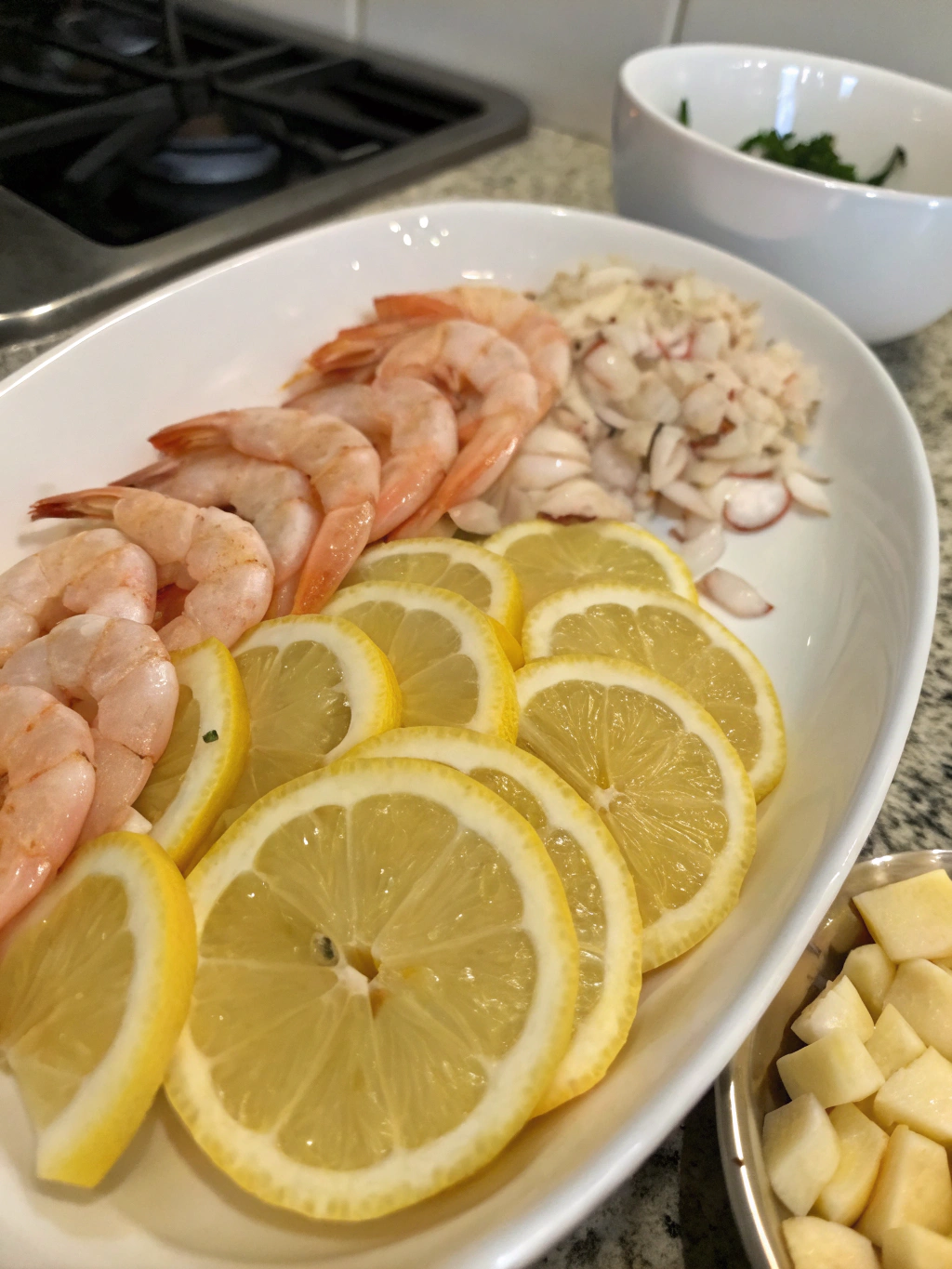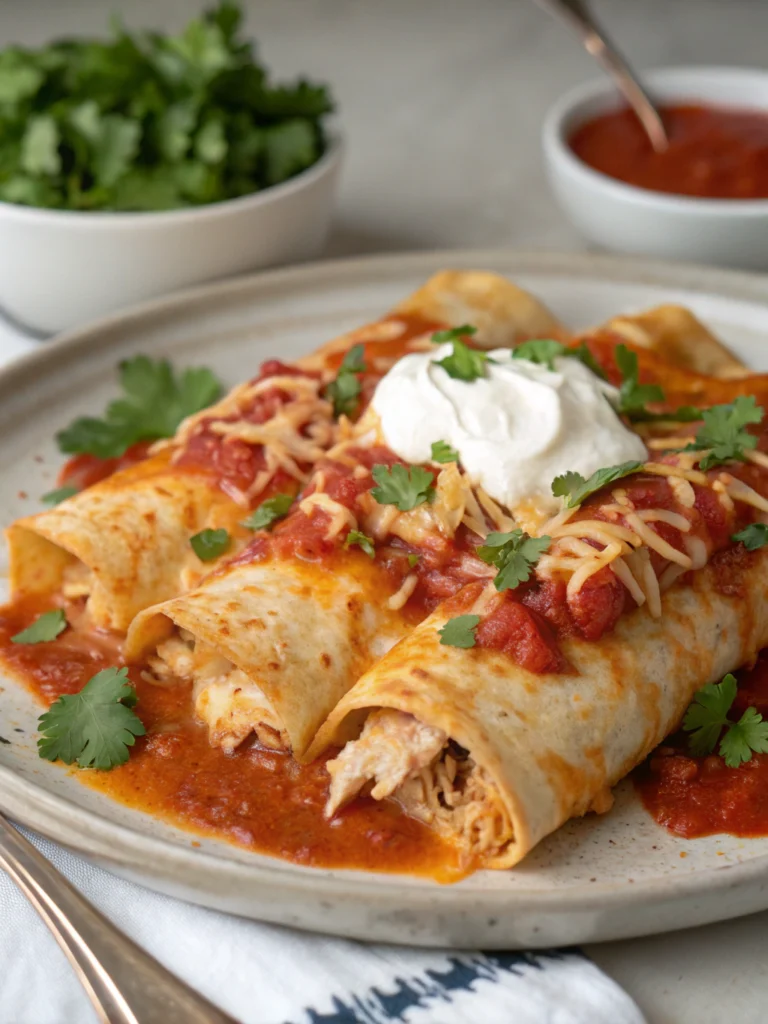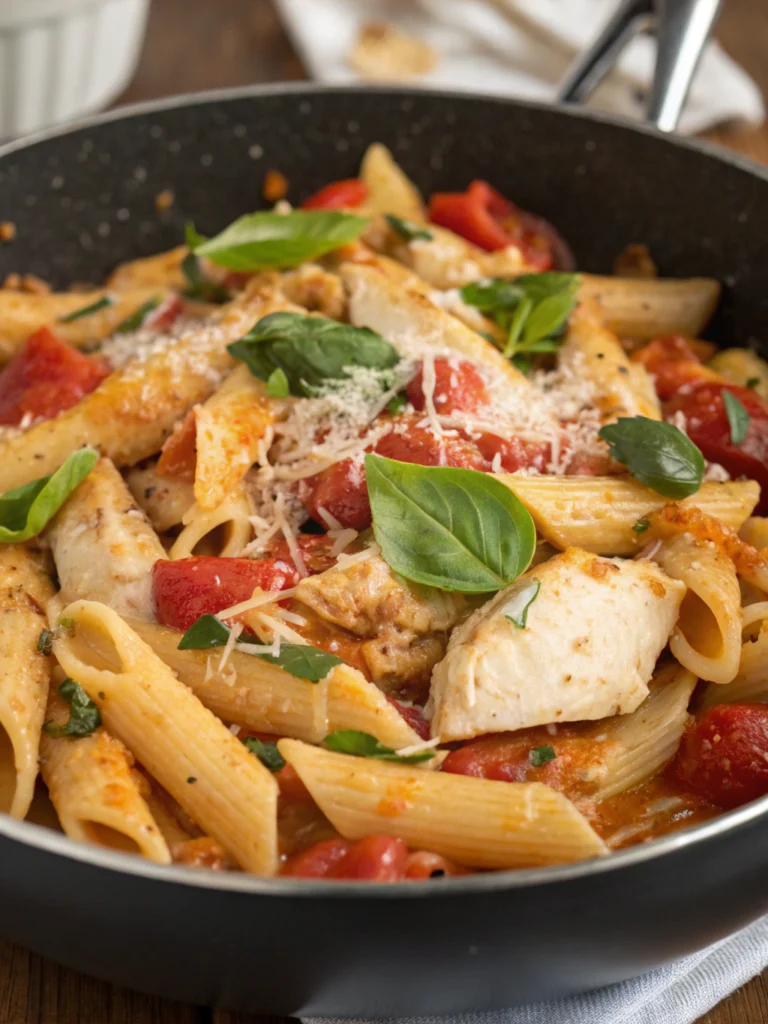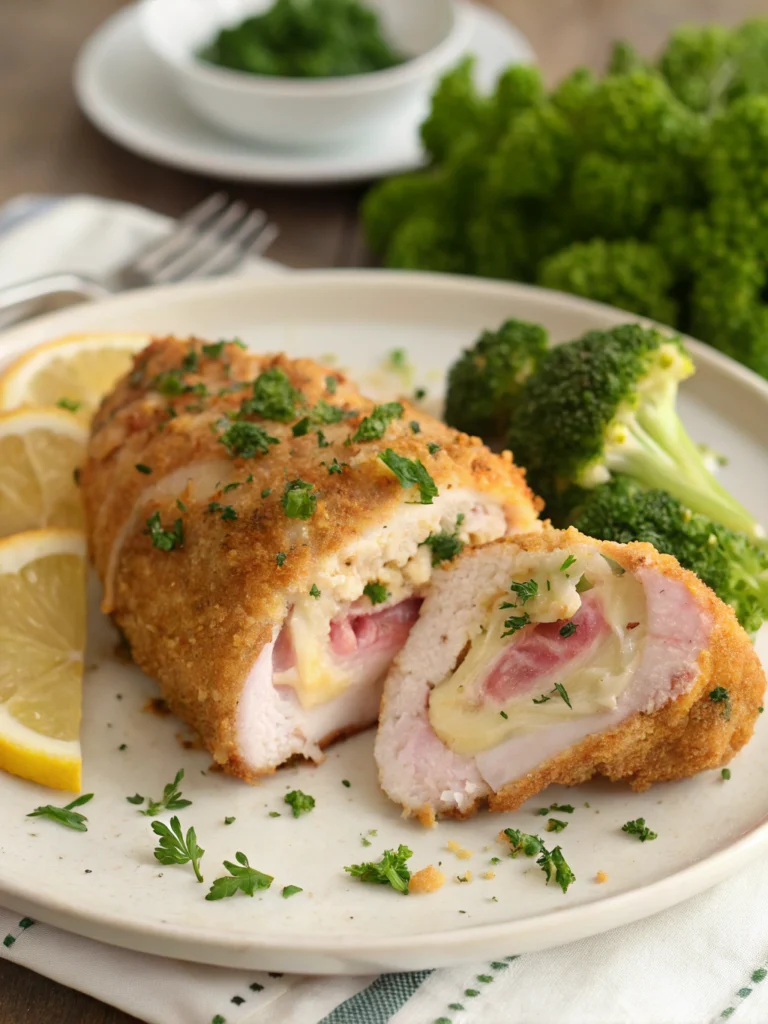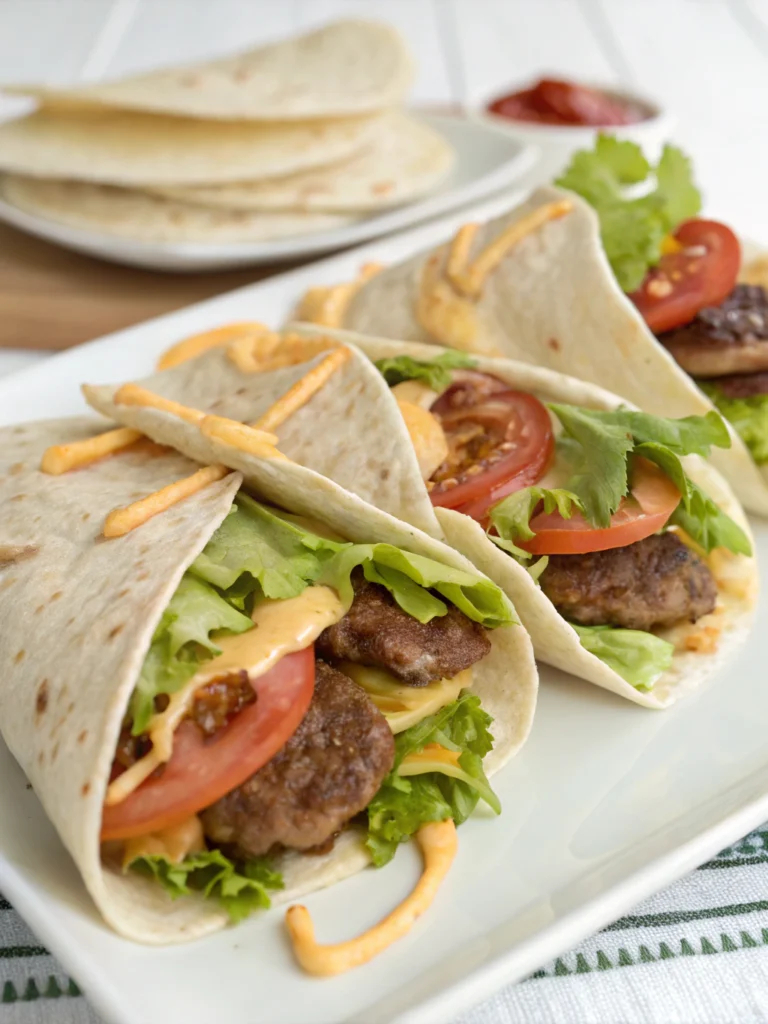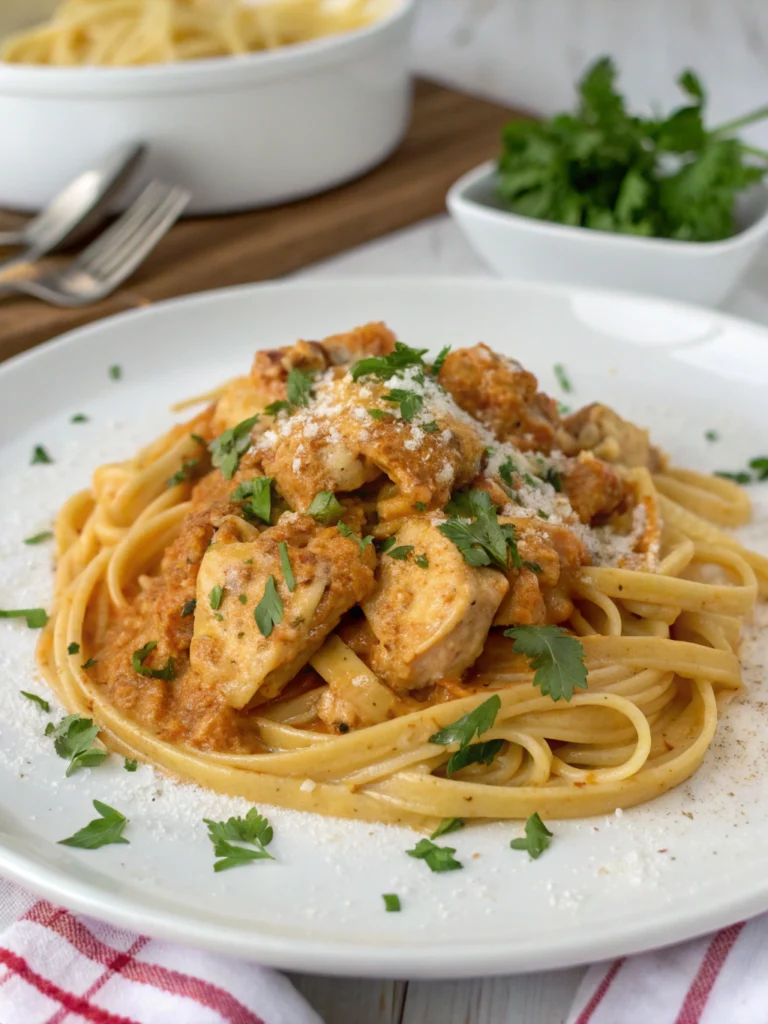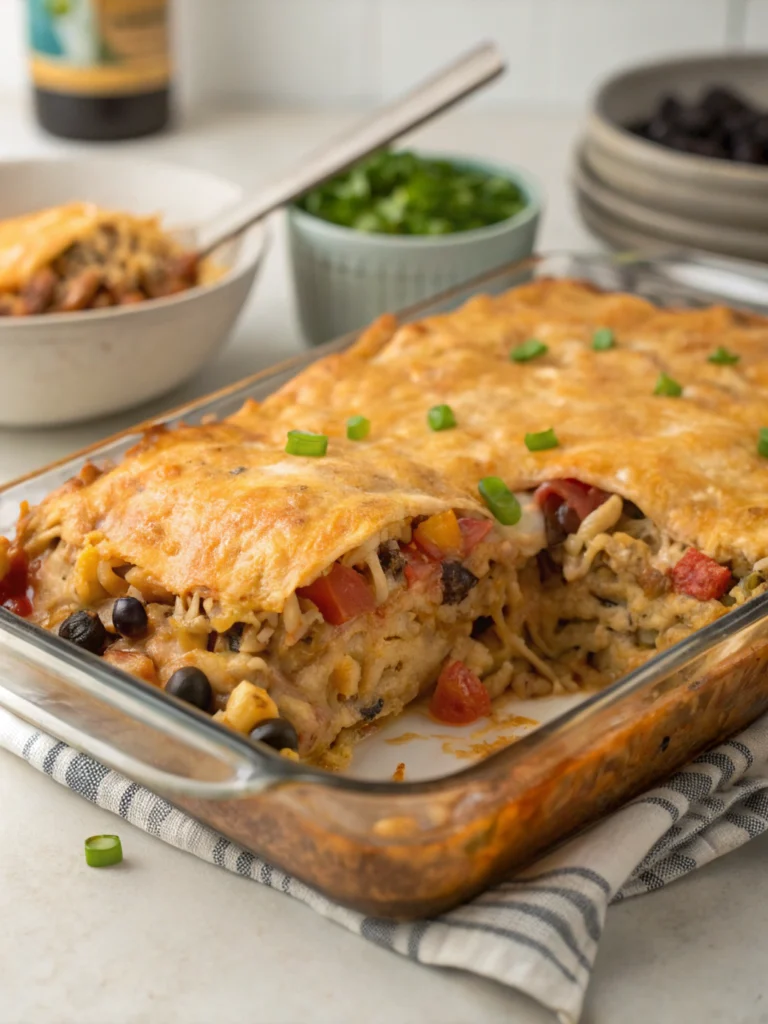Lemon Garlic Shrimp
This quick and flavorful lemon garlic shrimp comes together in just 15 minutes, featuring plump shrimp sautéed with fresh lemon, aromatic garlic, and a touch of butter for a restaurant-quality dish you can easily make at home any night of the week.
Easy Lemon Garlic Shrimp Recipe
There’s something magical about the combination of zesty lemon and fragrant garlic that transforms simple shrimp into an extraordinary meal. This classic lemon garlic shrimp recipe has been my go-to for years when I need an impressive dinner that doesn’t keep me chained to the kitchen. Perfect for busy weeknights or elegant entertaining, this Mediterranean-inspired dish brings sunshine to your table regardless of the season.
While shrimp is available year-round, this bright and refreshing preparation particularly shines during spring and summer months when fresh herbs are abundant and lighter meals are most appealing. The tradition of pairing seafood with citrus dates back centuries in coastal cuisines, and for good reason – the acidity of lemon perfectly balances the natural sweetness of the shrimp.
THIS RECIPE:
- Ready in just 15 minutes from start to finish
- Uses simple, fresh ingredients for maximum flavor
- Creates a versatile dish that works as appetizer or main course
- Features a silky butter sauce you’ll want to soak up with crusty bread
| Recipe Detail | Information |
|---|---|
| Prep Time | 5 minutes |
| Cook Time | 10 minutes |
| Total Time | 15 minutes |
| Servings | 4 |
| Yield | Approximately 1 pound cooked shrimp |
What makes this lemon garlic shrimp recipe truly special is its beautiful simplicity. With just a handful of quality ingredients and proper technique, you’ll create a dish that tastes like it came from a seaside restaurant. The sauce develops a rich depth as the shrimp releases its natural flavors, while remaining light enough to let the seafood shine. Even kitchen beginners can master this recipe on the first try, making it perfect for building cooking confidence.
Ingredients for Lemon Garlic Shrimp
The beauty of lemon garlic shrimp lies in the quality of its ingredients. Since we’re working with a relatively short ingredient list, each component plays an important role in the final dish. Opt for the freshest shrimp you can find – ideally wild-caught for the best flavor and sustainability. Fresh garlic and lemon make all the difference compared to pre-packaged alternatives.
For the Lemon Garlic Shrimp:
- 1 pound (454g) large shrimp (21-25 count), peeled and deveined, tails on
- 4 tablespoons (56g) unsalted butter, divided
- 3 tablespoons extra virgin olive oil
- 6 garlic cloves, minced (about 2 tablespoons)
- 1/4 teaspoon red pepper flakes (optional)
- 1/4 cup (60ml) dry white wine (such as Pinot Grigio or Sauvignon Blanc)
- 2 tablespoons fresh lemon juice (from approximately 1 medium lemon)
- 1 tablespoon lemon zest (from approximately 1 medium lemon)
- 1/4 cup (15g) fresh parsley, chopped
- Salt and freshly ground black pepper, to taste
For Garnish:
- Lemon wedges
- Additional chopped fresh parsley
- Crusty bread for serving (optional)
| Ingredient Category | Recommended Quantity | Quality Tips |
|---|---|---|
| Shrimp | 1 pound large (21-25 count) | Look for translucent, firm shrimp with no ammonia smell; wild-caught preferred for flavor |
| Aromatics | 6 cloves garlic | Choose firm, heavy heads of garlic with tight skin; avoid sprouting cloves |
| Citrus | 1-2 fresh lemons | Select heavy, bright lemons with smooth, thin skin for maximum juice |
| Herbs | 1/4 cup fresh parsley | Opt for flat-leaf (Italian) parsley for stronger flavor than curly varieties |
| Cooking Fats | 4 tbsp butter + 3 tbsp olive oil | Use high-quality European-style butter and cold-pressed extra virgin olive oil |
Pro tip: If using frozen shrimp, thaw completely in the refrigerator overnight rather than using a quick-thaw method to preserve the texture and flavor. Pat the shrimp thoroughly dry with paper towels before adding to the pan – this ensures proper searing instead of steaming.
How to Make Lemon Garlic Shrimp
Creating perfect lemon garlic shrimp is all about timing and temperature. The entire cooking process happens relatively quickly, so having all ingredients prepped and ready is essential. The key to developing deep flavor is allowing the garlic to become fragrant without burning, then building the sauce in layers while ensuring the shrimp remains tender and juicy.
Prepare the shrimp: Pat the peeled and deveined shrimp dry with paper towels. Season generously with salt and freshly ground black pepper on both sides.
Heat the pan: In a large skillet over medium-high heat, add 2 tablespoons butter and olive oil. Allow the butter to melt completely and begin to foam slightly.
Sear the shrimp: Add the shrimp to the hot pan in a single layer (work in batches if needed to avoid overcrowding). Cook for 1-2 minutes per side until they just begin to turn pink and start to curl. The shrimp should be about 80% cooked. Remove to a plate and set aside.
Create the aromatic base: Reduce heat to medium-low. In the same pan, add the minced garlic and red pepper flakes (if using). Sauté for 45-60 seconds until fragrant but not browned.
Deglaze and build the sauce: Pour in the white wine and use a wooden spoon to scrape up any flavorful bits from the bottom of the pan. Let the wine reduce by half, about 1-2 minutes.
Finish the sauce: Add the lemon juice and zest, then swirl in the remaining 2 tablespoons of butter. Allow the sauce to simmer for 1-2 minutes until slightly thickened.
Return the shrimp: Add the shrimp back to the pan along with any accumulated juices. Toss to coat in the sauce and continue cooking just until the shrimp are opaque and cooked through, about 1-2 minutes more.
Final touch: Remove from heat and stir in the fresh parsley. Taste and adjust seasoning if needed.
When removing the pan from heat, remember that residual heat will continue cooking the shrimp, so it’s better to err on the side of less cooking time. The perfect shrimp should form a “C” shape when done – if they curl into a tight “O” shape, they’ve likely overcooked.
Tips for Making Lemon Garlic Shrimp
Mastering this classic dish is all about technique and timing. Here are my expert recommendations for perfect lemon garlic shrimp every time:
- Don’t overcrowd the pan when searing the shrimp – this causes them to steam rather than sear, resulting in less flavor development
- Watch the garlic carefully as it cooks – the difference between fragrant and burnt is just seconds
- Remove shrimp from the refrigerator 15 minutes before cooking to take the chill off for more even cooking
- Keep tail-on shrimp for presentation and added flavor in the sauce, but remove for easier eating if preferred
| Technique | Recommendation |
|---|---|
| Shrimp Selection | Choose “dry” unfrozen shrimp when possible; avoid pre-cooked shrimp |
| Pan Choice | Use a wide skillet (12-inch) to allow proper evaporation and sauce reduction |
| Temperature Control | Medium-high for searing shrimp, reduced to medium-low for sauce development |
| Cooking Time | 1-2 minutes per side for shrimp; they cook extremely quickly |
The most critical moment in preparing lemon garlic shrimp is determining when they’re perfectly cooked. Look for these visual cues: the shrimp should turn from translucent to opaque pink, form a slight “C” shape, and feel slightly firm but still have some give when touched. Remember that carryover cooking will continue even after removing from heat, so it’s better to pull them slightly early than risk rubbery overcooked shrimp.
Make-Ahead Instructions
While lemon garlic shrimp is best enjoyed immediately after cooking, there are several ways to prep components ahead of time to streamline the cooking process:
You can clean and devein the shrimp up to 24 hours in advance. Store them in an airtight container in the coldest part of your refrigerator. For optimal freshness, place the prepared shrimp on a bed of ice in a colander set over a bowl to catch melting water, and cover with plastic wrap.
The garlic can be minced, herbs chopped, and lemon zested and juiced up to 8 hours ahead. Store each component separately in small containers in the refrigerator. The lemon juice may be kept for up to 24 hours, though the brightness of flavor diminishes slightly over time.
For the most efficient preparation, measure out all remaining ingredients and have them ready by the stove. This mise en place approach is particularly important for quick-cooking dishes like lemon garlic shrimp where timing is crucial.
If serving this dish for a dinner party, consider cooking the shrimp just 80% through, then removing them from the pan up to 30 minutes before serving. When ready to serve, quickly reheat the sauce and add the shrimp back in just long enough to warm through and finish cooking.
Storing Leftovers
Properly stored leftover lemon garlic shrimp can be enjoyed the next day, though the texture won’t be quite as perfect as freshly made. To maintain food safety and quality:
Allow the shrimp to cool completely before refrigerating, but don’t leave at room temperature for more than 1 hour. Transfer leftovers to an airtight container, making sure to include the sauce, which helps prevent the shrimp from drying out.
Refrigerated lemon garlic shrimp will keep for up to 2 days when properly stored at or below 40°F (4°C). Glass containers are preferable to plastic as they won’t absorb the garlic odors.
When reheating, use gentle methods to prevent the shrimp from becoming tough. The best approach is to warm the leftovers in a skillet over medium-low heat just until warmed through, about 2-3 minutes. You can also microwave at 50% power in 30-second increments until just heated.
Alternatively, leftover lemon garlic shrimp can be enjoyed cold as part of a salad or wrap, which eliminates concerns about texture changes from reheating.
Freezing Lemon Garlic Shrimp
While fresh is best with seafood dishes, lemon garlic shrimp can be frozen if necessary. For optimal results when freezing:
Cook the shrimp slightly less than you normally would (about 80% done) to prevent overcooking when reheating. Allow the dish to cool completely before freezing.
Transfer the shrimp and sauce to a freezer-safe container, leaving about 1/2 inch of headspace for expansion. For best quality, place a piece of plastic wrap directly on the surface of the sauce before sealing to prevent freezer burn.
Alternatively, freeze individual portions in heavy-duty freezer bags, squeezing out as much air as possible before sealing. Lay the bags flat for quicker freezing and more efficient storage.
Properly frozen lemon garlic shrimp will maintain best quality for up to 1 month. Beyond that time, the shrimp may develop a rubbery texture, though it will remain safe to eat for 2-3 months.
To thaw, transfer the frozen shrimp to the refrigerator and allow to thaw overnight. Reheat gently in a skillet over medium-low heat, being careful not to overcook the shrimp. A splash of white wine or chicken broth can help refresh the sauce if it seems too thick after freezing.
Serving Suggestions
Lemon garlic shrimp is incredibly versatile and can be presented in numerous delicious ways:
For a classic presentation, serve over al dente linguine or angel hair pasta with extra sauce spooned over top. A light dusting of freshly grated Parmesan cheese adds a wonderful finishing touch without overwhelming the delicate flavors.
Create a complete Mediterranean meal by serving alongside fluffy couscous or orzo with a side of roasted asparagus or zucchini. The vegetables can be roasted while you prepare the shrimp for perfect timing.
For a low-carb option, serve over cauliflower rice or zucchini noodles. The sauce acts as a perfect flavoring for these lighter alternatives.
Crusty bread is essential for soaking up the incredible sauce – consider a rustic sourdough or French baguette warmed in the oven just before serving.
Pairing beverages should complement rather than compete with the bright flavors of the dish. A crisp white wine like the one used in cooking (Sauvignon Blanc or Pinot Grigio) makes for a harmonious match. For non-alcoholic options, sparkling water with a squeeze of lemon or a light iced tea works beautifully.
Serve this dish at the ideal temperature – hot but not scorching, allowing the flavors to be fully appreciated. Garnish with additional fresh parsley and lemon wedges for both visual appeal and to allow guests to add extra brightness if desired.
FAQ
Can I use frozen shrimp for this lemon garlic shrimp recipe?
Yes, frozen shrimp works well in this recipe. Thaw completely in the refrigerator overnight rather than using a quick-thaw method. Once thawed, pat the shrimp thoroughly dry with paper towels before cooking to ensure proper searing. Quality frozen shrimp is often fresher than “fresh” shrimp at many supermarkets, as most shrimp is frozen shortly after catching.
What can I substitute for the white wine?
If you prefer not to use alcohol, substitute an equal amount of chicken broth plus 1 teaspoon of white wine vinegar or additional lemon juice. This will provide similar acidity and depth of flavor. For a different flavor profile, you could use fish stock or clam juice, which complement the seafood beautifully.
My shrimp turned out rubbery. What went wrong?
Rubbery shrimp is almost always the result of overcooking. Shrimp cooks extremely quickly – usually 1-2 minutes per side is sufficient. Watch for the visual cues: shrimp should turn from translucent to opaque and form a “C” shape. If they curl into a tight “O” shape, they’ve overcooked. Next time, try removing them from the heat just as they turn pink, as they’ll continue cooking slightly from residual heat.
Can I make this dish spicier?
Absolutely! The red pepper flakes can be increased to 1/2 teaspoon for noticeable heat, or you can add a finely diced fresh chili such as jalapeño or serrano to the garlic step. Another option is to include a dash of cayenne pepper or a splash of your favorite hot sauce to the finished dish. Start with a small amount and adjust to your preference.
How can I make this dish more substantial for a main course?
To transform this into a heartier main dish, consider adding 8 ounces of cherry tomatoes (halved) to the pan after the garlic is fragrant, or stir in 2 cups of fresh baby spinach just before returning the shrimp to the pan. You can also add 1/2 cup of heavy cream to the sauce for a richer variation. Serving over pasta, rice, or with crusty bread makes it more filling without overpowering the delicate flavors of the shrimp.

